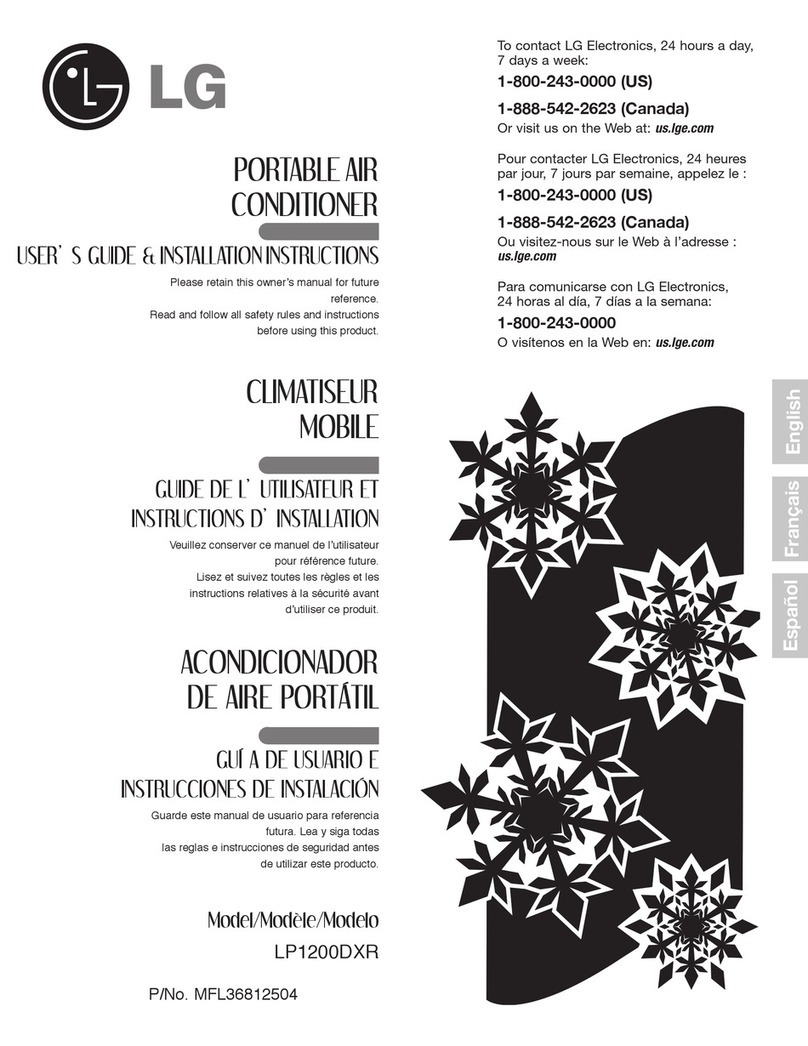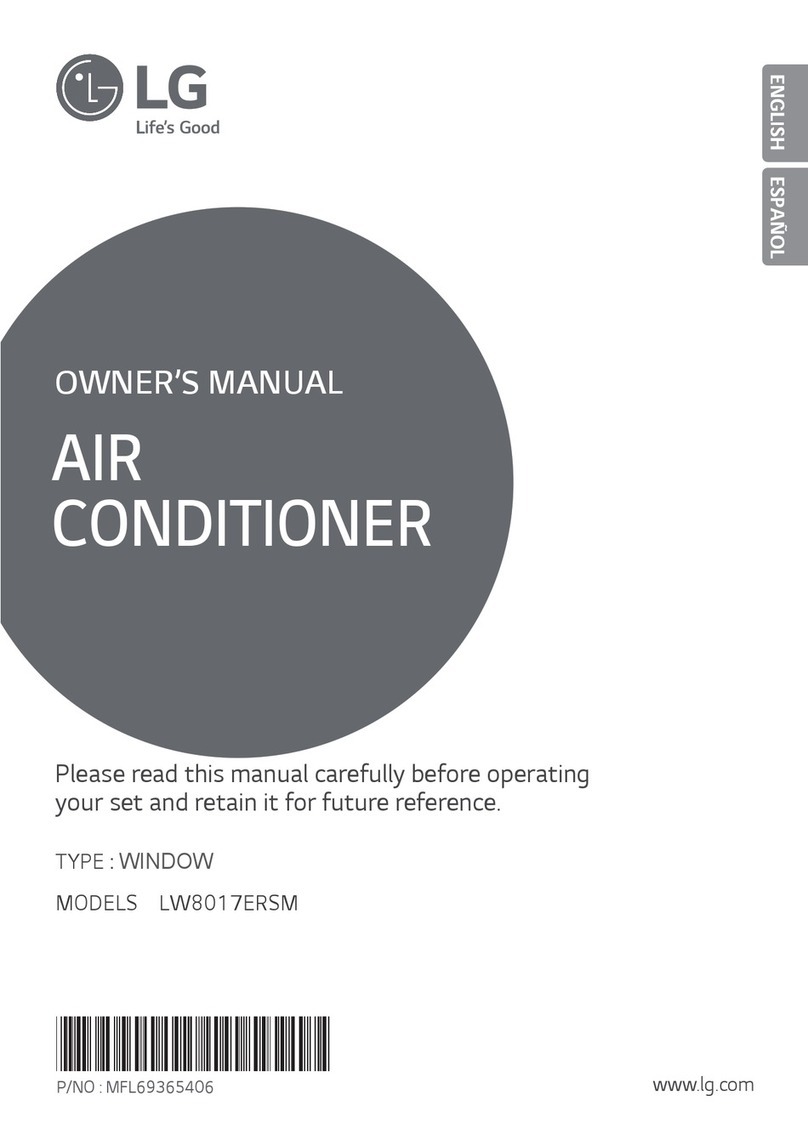2Room Air Conditioner
Air Conditioner Service Manual
TABLE OF CONTENTS
Preface ........................................................................3
Electronic Type ........................................................3
Mechanical Type......................................................3
Safety Precautions.....................................................4
Product Specifications ..............................................6
Operation ....................................................................8
Features ..................................................................8
Control Locations ....................................................8
Mechanical type model .......................................8
Electronic type model..........................................9
Disassembly Instructions........................................10
Mechanical Parts...................................................10
Front grille .........................................................10
Cabinet..............................................................10
Control box........................................................10
Air Handling Parts .................................................11
Air guide and turbo fan......................................11
Fan ....................................................................11
Shroud ..............................................................12
Electrical Parts ......................................................12
Overload protector ............................................12
Compressor ......................................................12
Capacitor...........................................................13
Power cord ........................................................13
Thermostat........................................................13
Rotary switch ....................................................13
Motor.................................................................14
Refrigerating Cycle................................................14
Condenser ........................................................14
Evaporator.........................................................14
Capillary tube....................................................15
Installation ................................................................17
How to Install the unit ............................................17
Checking installation..............................................17
How to drain ..........................................................17
Window Requirements ..........................................18
Installation Kits Contents.......................................18
Horizontal Sliding Window Installation...................19
Casement Window Installation ..............................20
Troubleshooting Guide ............................................21
Outside dimensions ..............................................21
Piping system ........................................................21
Troubleshooting Guide...........................................22
Room Air Conditioner Voltage Limits.....................29
Mechanical type model .....................................29
Electronic type model........................................29
Schematic Diagram.................................................33
Circuit Diagram......................................................33
Electronic Control Device ......................................38
Components Location
(For Main P.C.B ASM)............................................39
Components Location
(For Display P.C.B ASM)........................................39
Exploded View & Replacement Parts List .............40






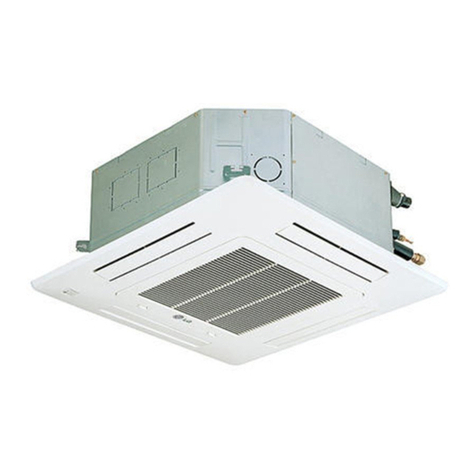

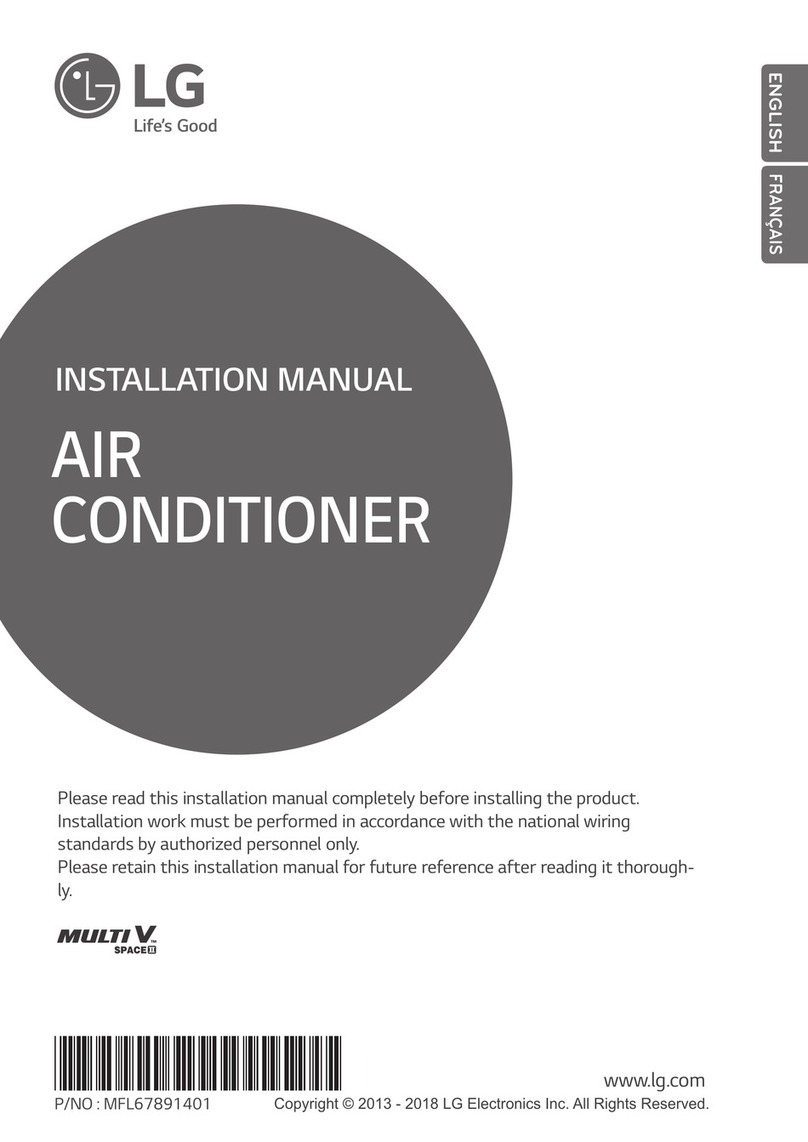

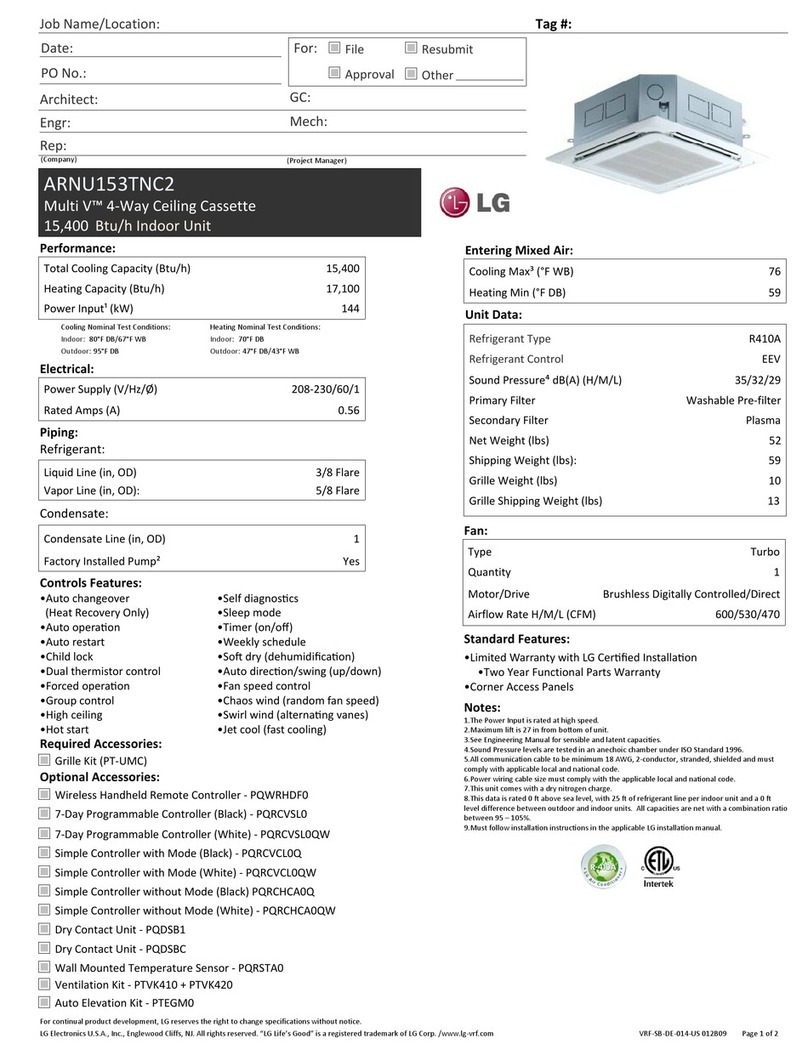
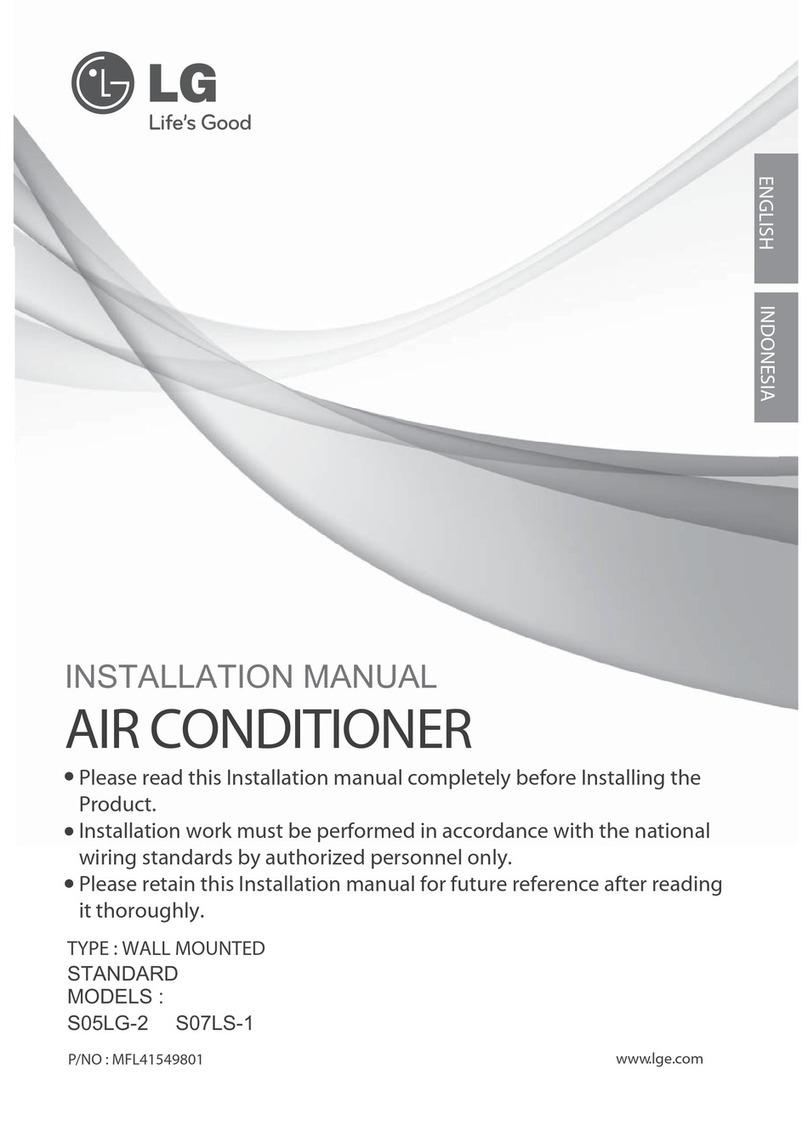
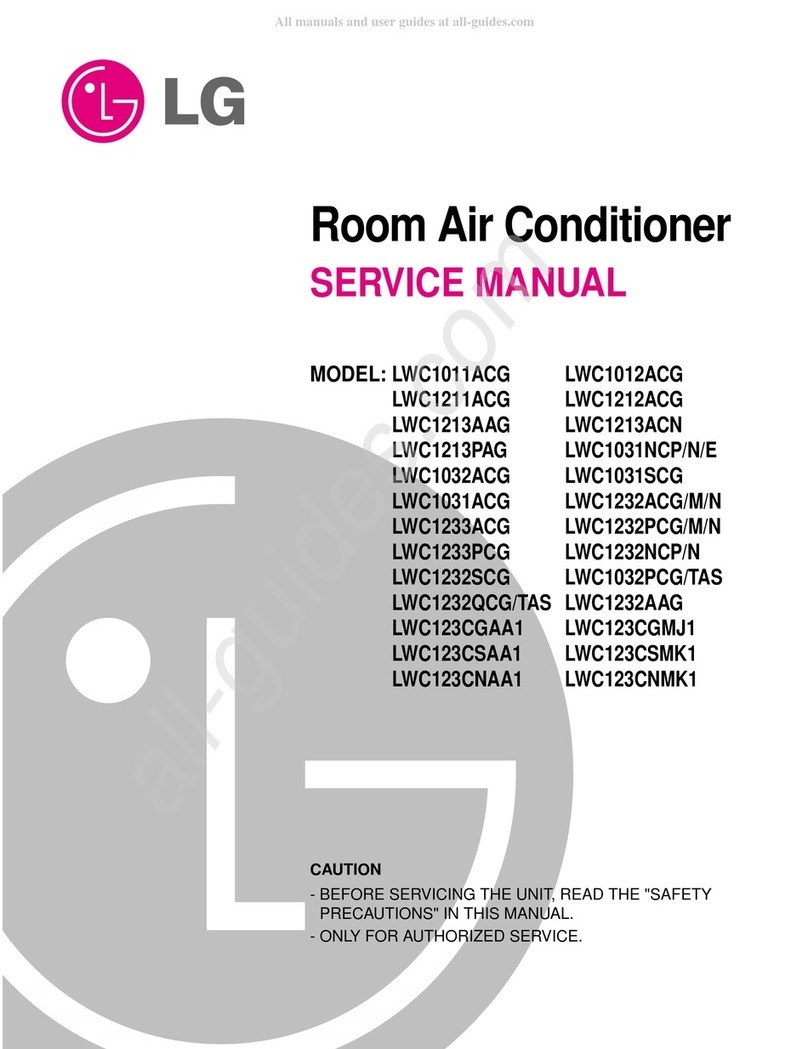
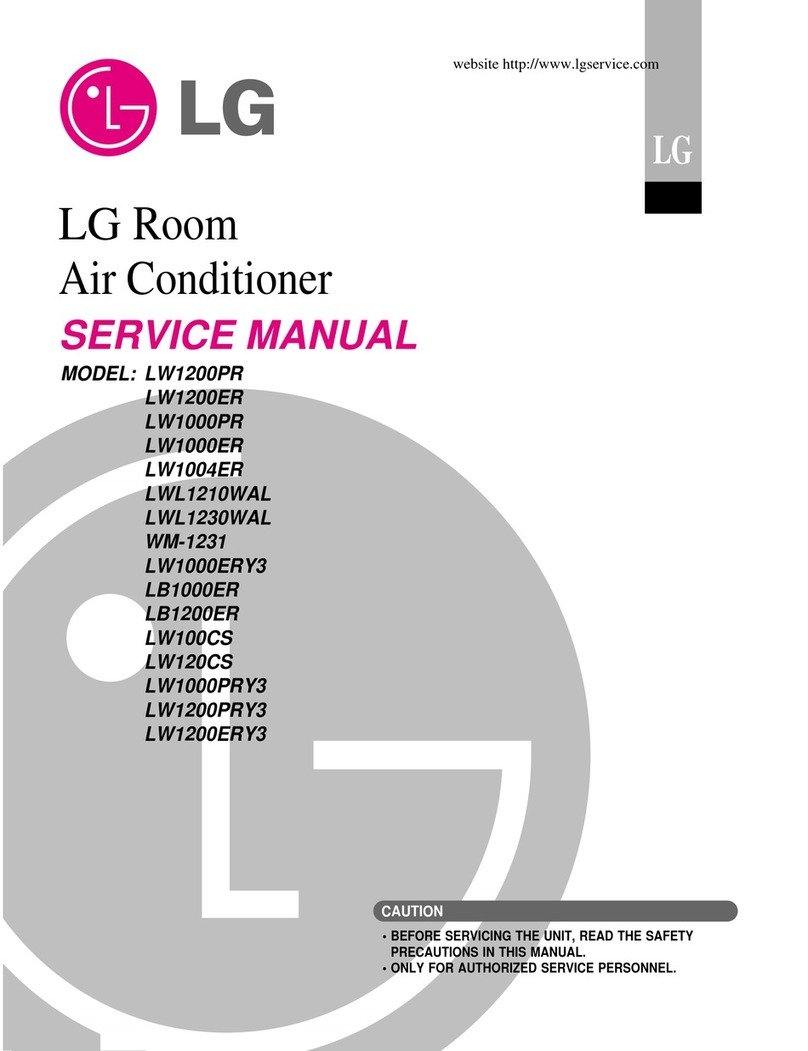

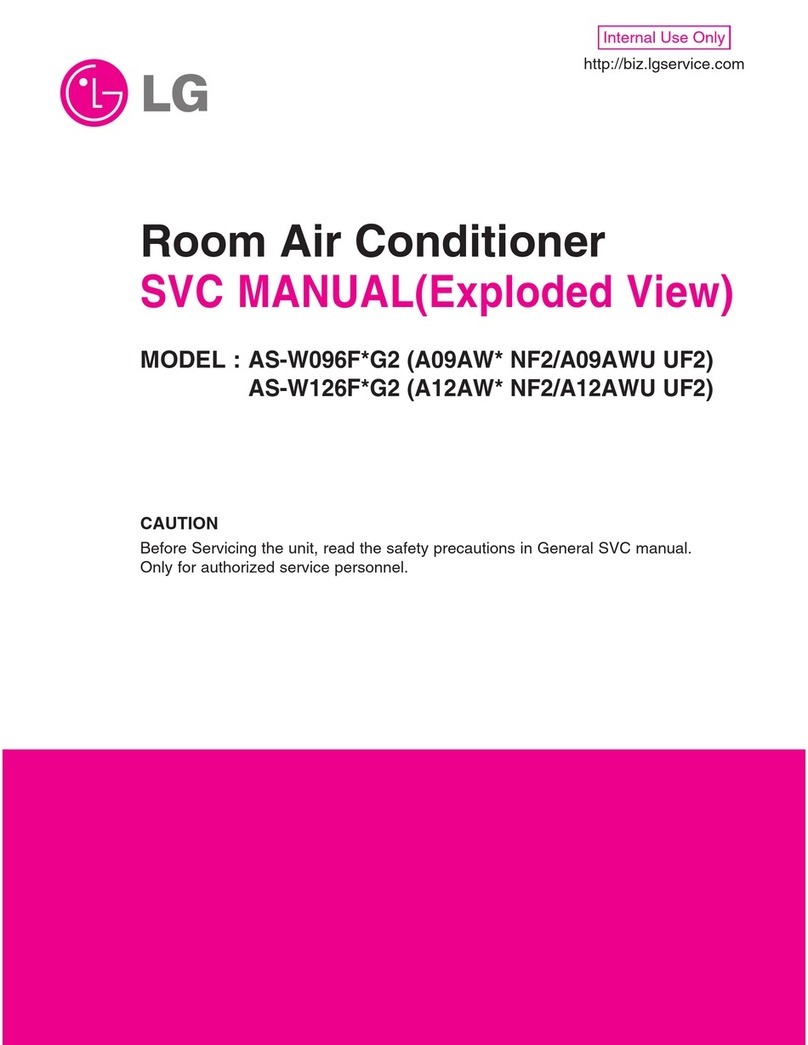


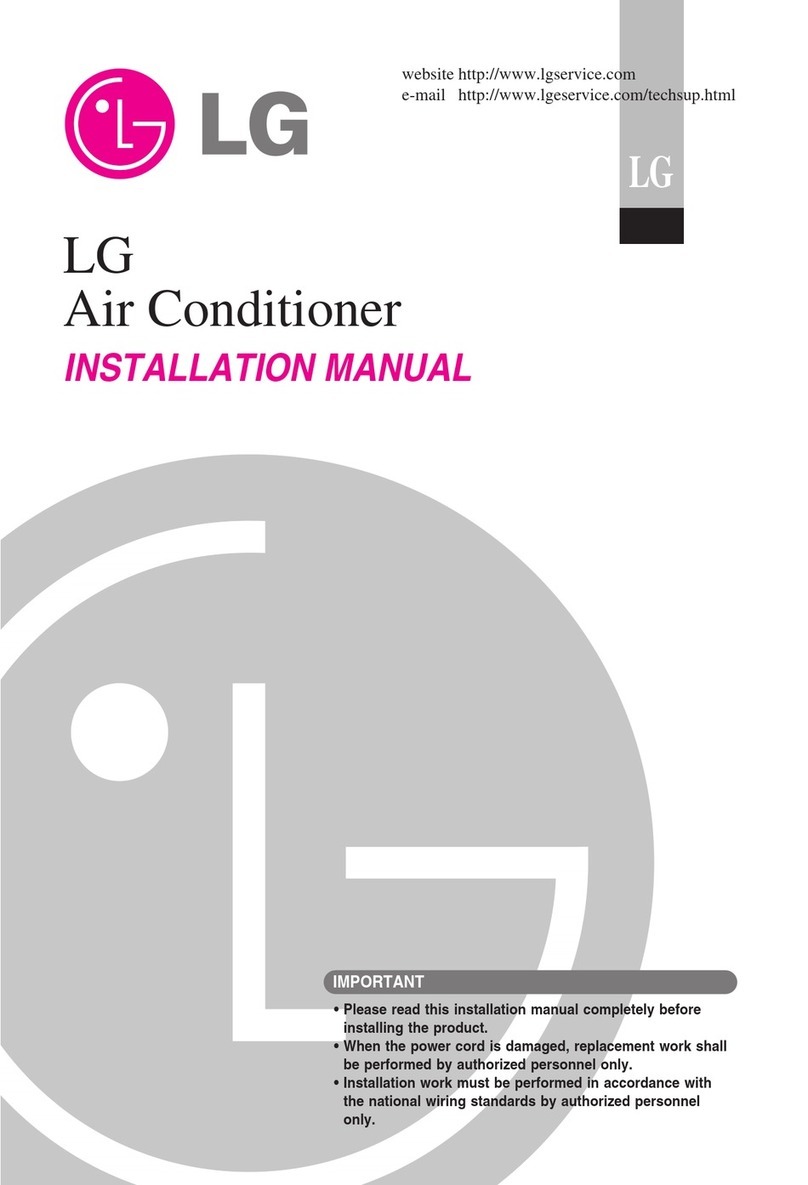
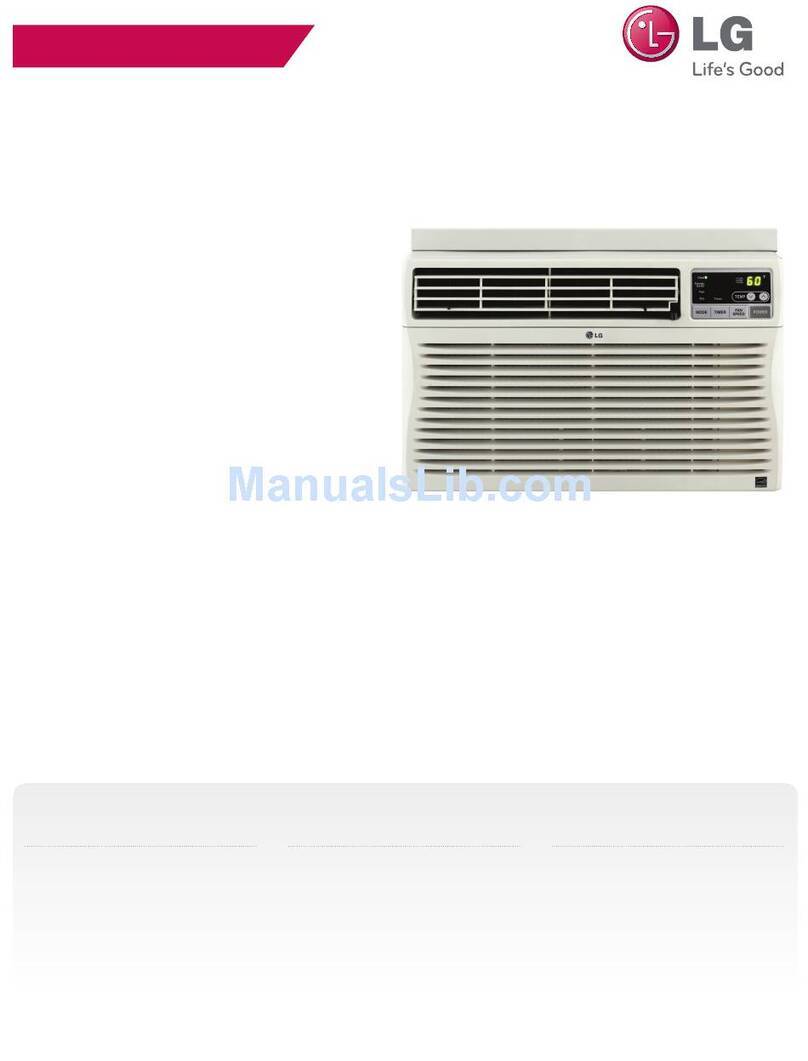
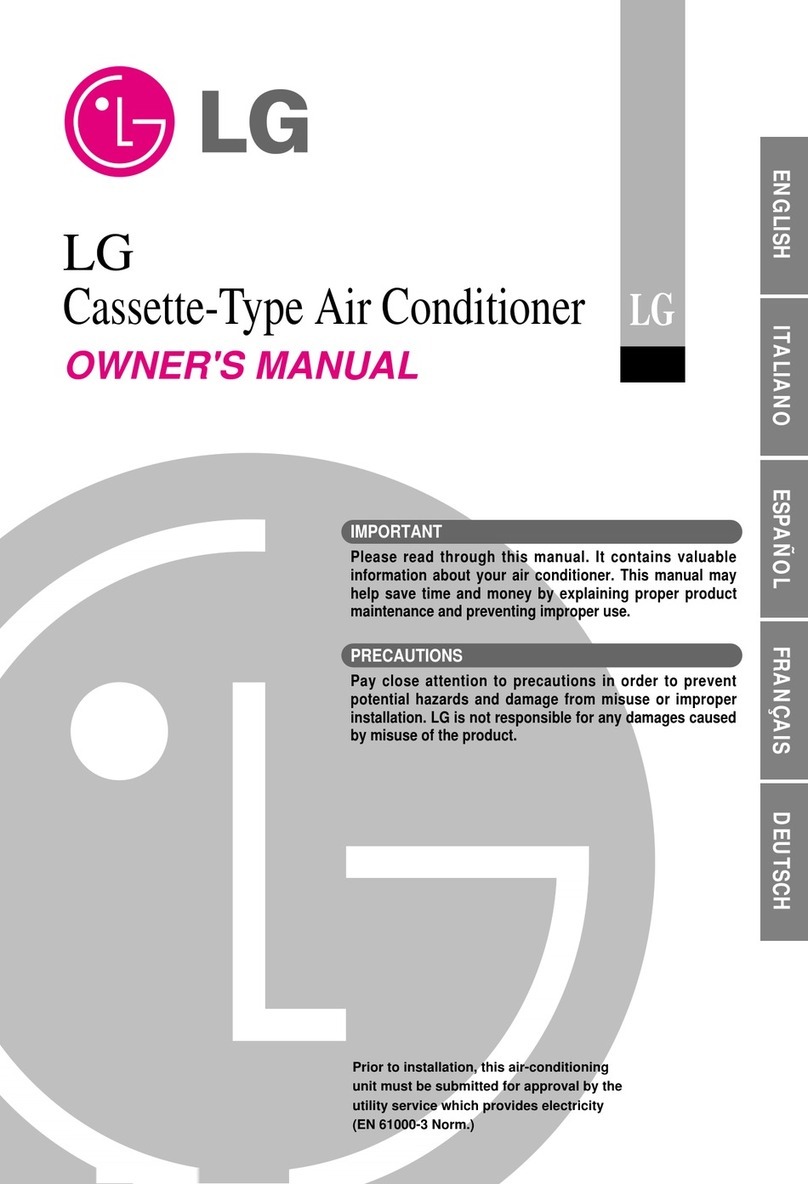



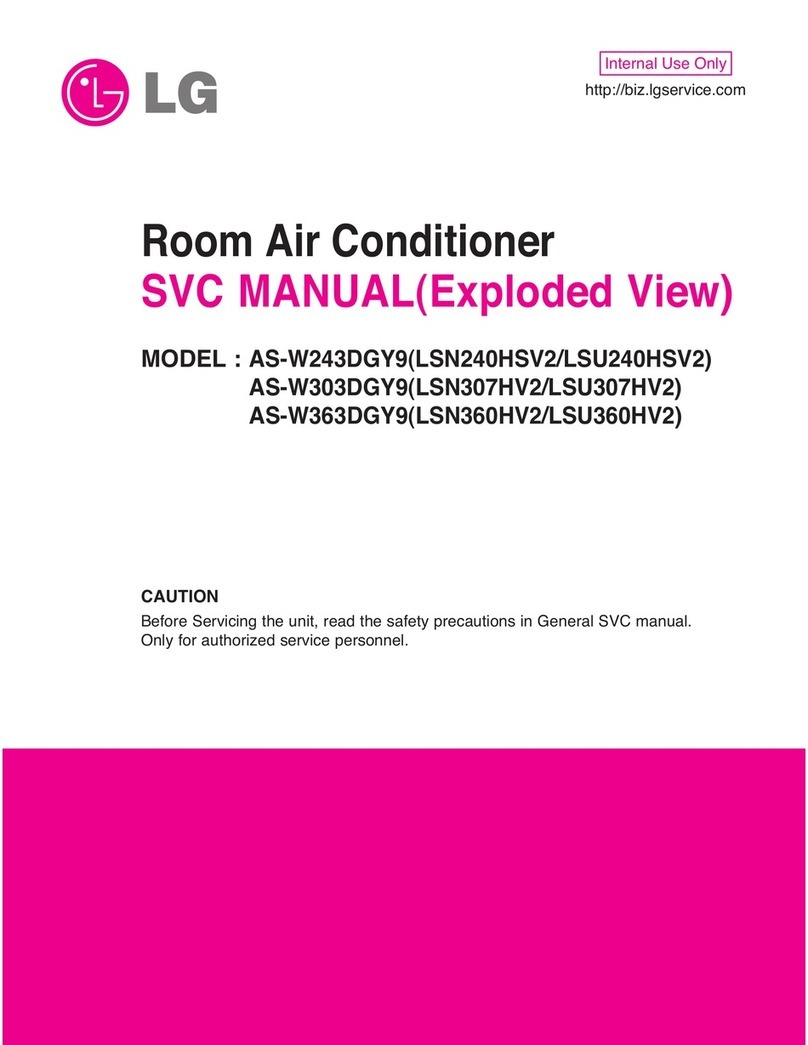
![LG ATNH24GPLED[UT24 NPD] User manual LG ATNH24GPLED[UT24 NPD] User manual](/data/manuals/28/2/282om/sources/lg-atnh24gpled-ut24-npd-air-conditioner-manual.jpg)
